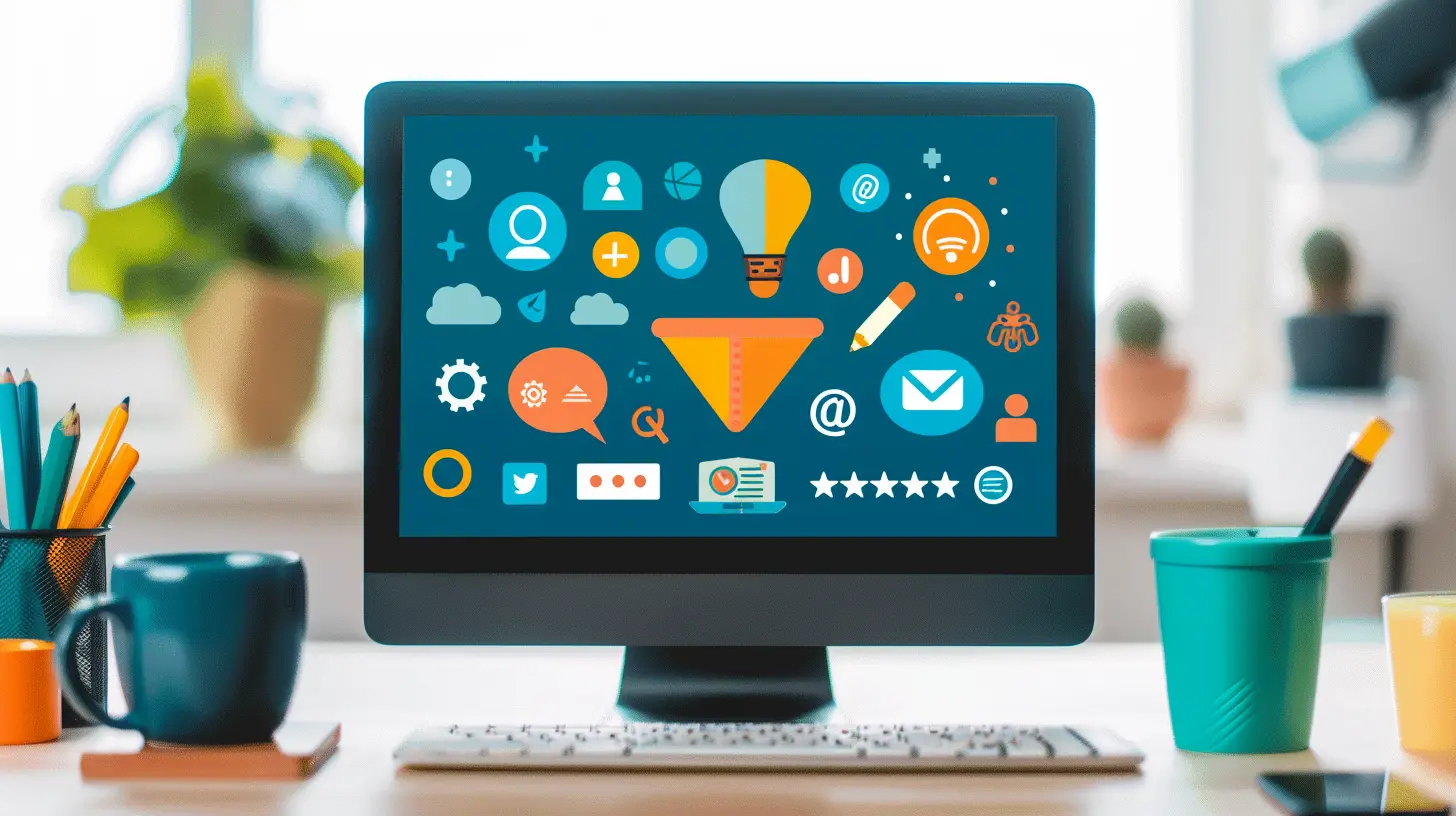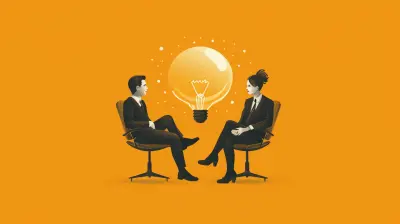6 February 2025
When was the last time you made a big purchase without batting an eye? Probably never, right? Whether it’s buying a car, signing up for a new software tool, or even deciding where to grab lunch, you likely go through a decision-making process. That process is what marketers and businesses call "the buyer’s journey."
Understanding this journey isn’t just important—it’s critical if you want to generate high-quality leads and nurture them effectively. Think of it as reading a map before a road trip. You wouldn't just start driving, would you? The buyer's journey is your roadmap to meaningful connections, better engagement, and, of course, more business.
In this article, we’ll break down the buyer’s journey step by step, dive into why it matters for lead generation, and show you how to align your strategy with your audience's decision-making process. Let’s dig in! 
What Exactly Is the Buyer’s Journey?
First, let’s get one thing straight. The buyer’s journey isn’t your sales process; it’s their buying process. It’s the path potential customers take from problem awareness all the way to the final purchase (and hopefully beyond into loyalty). Think of it like a funnel, guiding people from being complete strangers to becoming loyal customers.According to inbound marketing principles, the buyer’s journey consists of three key stages:
1. Awareness Stage – "I have a problem, and I need to figure out what it is."
2. Consideration Stage – "I know my problem. What solutions are out there?"
3. Decision Stage – "I’ve found my solution. Who or what do I choose?"
By understanding these stages, you can create content, strategies, and campaigns that speak directly to what your target audience needs at each point. When you meet them where they are instead of pushing them where you want them to go, lead generation becomes a whole lot easier—and more effective. 
The Awareness Stage: The Revelation Moment
Picture this: Your audience is walking around, blissfully unaware they’ve got a problem. Life seems fine on the surface, but something feels... off. Maybe their current software tool is causing too many headaches. Maybe they're struggling with productivity at work. Whatever it is, the Awareness Stage is when they finally start to realize there's an issue and feel the urge to do something about it.What They Need in This Stage
At this point, they’re not ready for a sales pitch. Trust me, if you barge in screaming, "Buy my product!" they’ll run the other way. What they need right now is information. It’s like being hungry—you don’t go straight to dessert; you start with appetizers to figure out what you're really craving.How to Generate Leads in the Awareness Stage
Your goal here is to educate. Create content that helps potential buyers identify their challenges. Blog posts, infographics, explainer videos, and social media snippets work wonders here. Use SEO tactics to rank for keywords and phrases they might type into Google. Think along the lines of "Why is my project management failing?" or "Common productivity challenges in teams."Pro Tip: Don’t forget empathy. They’re not looking for a know-it-all; they’re looking for someone who gets what they’re going through. Be that someone! 
The Consideration Stage: The Research Rabbit Hole
Now that your audience knows they’ve got a problem, they’re on a mission to solve it. This is the Consideration Stage, where they start weighing their options. They’re Googling everything under the sun, scrolling through comparison blogs, asking for recommendations, and soaking up all the info they can find.What They Need in This Stage
In this phase, they want options, not ultimatums. They’re open to suggestions but aren’t ready to commit just yet. Think of them as someone shopping for a new pair of running shoes. They’re trying on brands, looking at reviews, and testing which one fits best.How to Generate Leads in the Consideration Stage
This is your chance to position yourself as a credible authority. Offer in-depth resources like comparison guides, white papers, webinars, case studies, or free trials. Make sure you highlight what makes you stand out.For example, if your company sells CRM software, this is where you’d want to show a side-by-side comparison of your features versus your competitors’. But remember—this isn’t about trashing the competition. It’s about showing what makes you the right fit for their problem.
Also, don’t underestimate the power of gated content. Create valuable resources like eBooks or toolkits that require visitors to fill out a form (name, email, company) to access. Voilà! You’ve just captured a solid lead. 
The Decision Stage: The Moment of Truth
Now we’re getting to the good stuff. At this stage, your audience is narrowing down their choices. They’ve done their homework, and they know what they want—or at least, they’re close to figuring it out. This is where they decide “who” or “what” is going to solve their problem.What They Need in This Stage
They’re craving reassurance. A little nudge to affirm they’re making the right choice. This could come in the form of testimonials, product demos, or FAQs that answer any lingering doubts. Think of it as a final pep talk before a big decision.How to Generate Leads in the Decision Stage
This is your time to shine! Create clear and persuasive calls-to-action (CTAs) that steer them toward the finish line. Use phrases like “Claim Your Free Trial Today,” “Schedule a Demo Now," or "Get Your Custom Quote.”Also, don’t underestimate the power of social proof. Case studies, success stories, and glowing customer reviews are like that friend who says, “This place has the best pizza; you have to try it!” It’s the push they need to say, “Okay, I’m in!”
Another tip? Offer guarantees or risk-free options to reduce friction. For example, a “Money-Back Guarantee” can be a game-changer for fence-sitters.
The Role of Personalization and Timing
Let’s take a quick detour. Imagine you’re in a coffee shop, and the barista hands you a steaming cup of tea when you’re craving coffee. Frustrating, right? That’s what happens when you serve the wrong content at the wrong stage of the buyer’s journey.Here’s the thing: timing and personalization are everything. Use analytics tools to track where your leads are in the journey and tailor your approach accordingly. Marketing automation platforms like HubSpot or Mailchimp can help you send the right message at the right time, whether it’s an email, ad, or piece of content.
Common Pitfalls to Avoid
Before we wrap up, let’s address some common mistakes businesses make when using the buyer’s journey for lead generation:1. Skipping the Awareness Stage – Don’t jump straight to sales pitches. If they’re not aware of their problem, they’re not ready to hear about your product.
2. Failing to Align with Each Stage – Serving the same cookie-cutter message to everyone won’t get you far. Tailor your approach to where they are in the journey.
3. Being Too Pushy – Nobody likes a pushy salesperson. Be helpful, not forceful.
4. Ignoring Post-Purchase – The buyer’s journey doesn’t end at the sale. Keep delighting your customers to turn them into loyal advocates.
Wrapping It Up
At the end of the day, understanding the buyer’s journey is like having a cheat code to better lead generation. When you know what your audience is thinking, feeling, and needing at each stage, you can meet them with exactly the right content, tools, and messaging.Whether it’s offering empathy in the awareness stage, showcasing your expertise in the consideration stage, or sealing the deal in the decision stage, every interaction you have with potential buyers should feel personal and valuable. When done right, the buyer’s journey transforms from a confusing maze into a well-lit path that leads straight to your business’s door.
So, start mapping it out, tailoring your strategies, and building trust with your audience. The leads (and sales) will follow.












Ingrid Fields
Ever wonder what truly drives a buyer's decision? Unraveling the secrets of the buyer's journey could be the key to unlocking your lead generation potential. Are you ready to explore the unknown?
March 2, 2025 at 5:40 AM